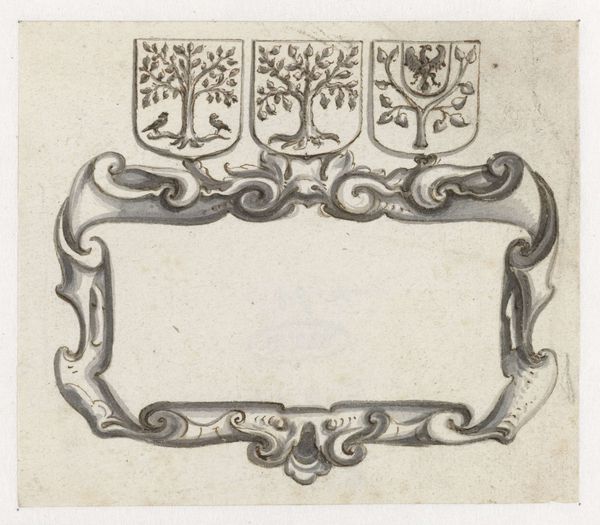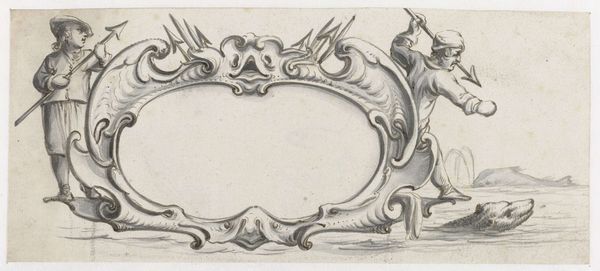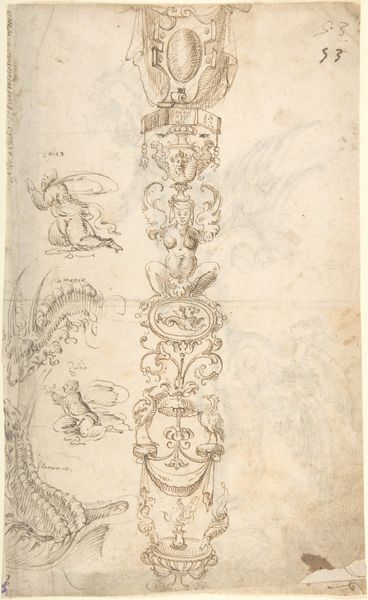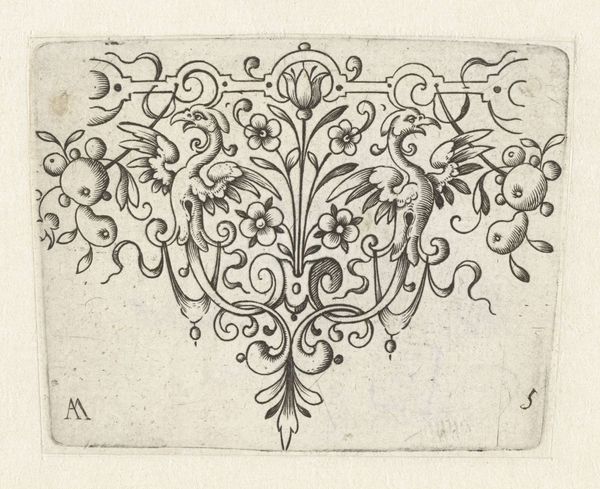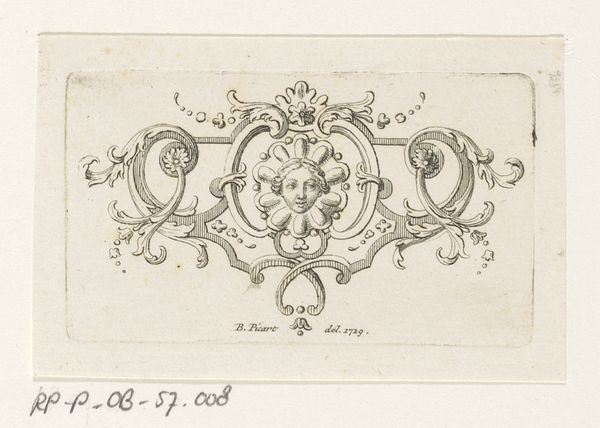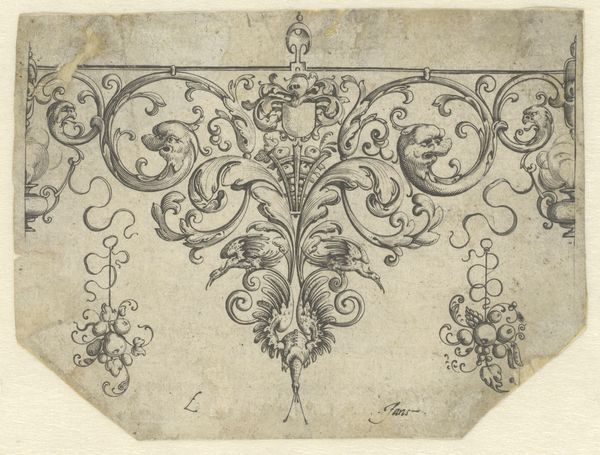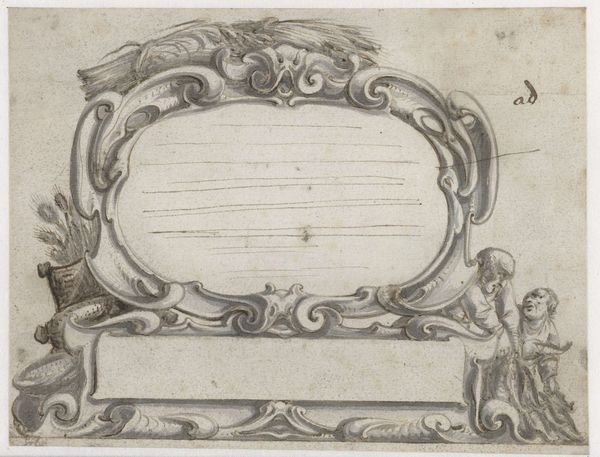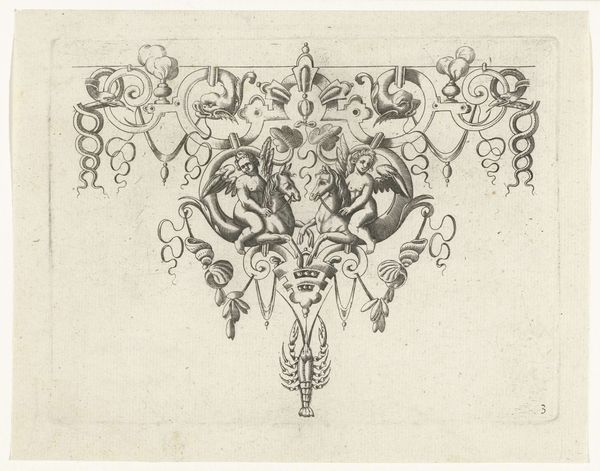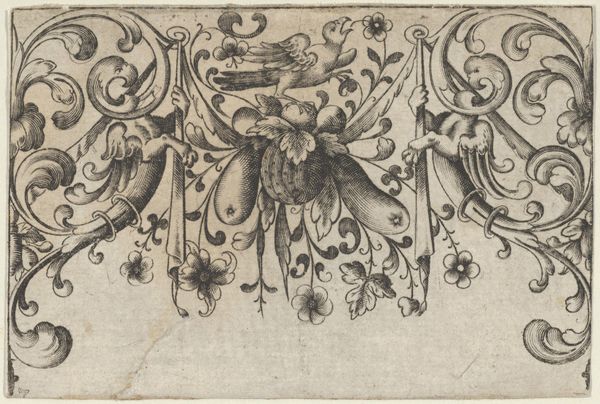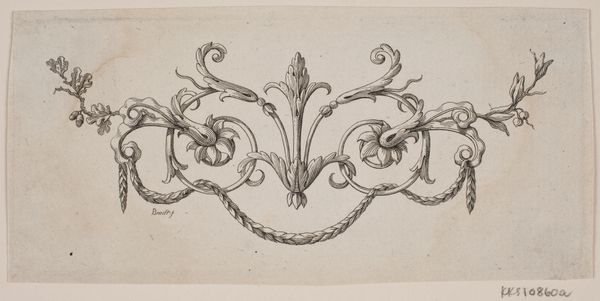
drawing, ink, pen
#
drawing
#
toned paper
#
light pencil work
#
dutch-golden-age
#
pencil sketch
#
personal sketchbook
#
ink
#
pen-ink sketch
#
pen work
#
sketchbook drawing
#
pen
#
watercolour illustration
#
sketchbook art
#
watercolor
Dimensions: height 82 mm, width 105 mm
Copyright: Rijks Museum: Open Domain
Curator: This little gem, dating from around 1657 to 1662, is by Pieter Jansz. It's called "Rechthoekige cartouche met brood en vissen"— a rectangular cartouche with bread and fish. It's ink, pen, and watercolour on toned paper. Editor: Oh, it's a fleeting, spectral thing. So delicate. I see an ornate frame or perhaps a crest design… but dangling are these rather forlorn edibles! It strikes me as quite odd and intriguing, this marriage of ornamentation and…well, dinner. Curator: The combination is, I think, rather beautiful in its way. You have the bounty and sustenance suggested by the bread and fish combined with the implication of elevated status or formal pronouncements through the cartouche itself. Food, quite literally, raised on a pedestal. Editor: Exactly. I read the dangling bread and fish almost like heraldic charges. Food as a symbol, transformed into a badge of honour...but for whom? Who displays this emblem? Is it aspirational, ironic, pious? The empty cartouche demands a story be placed within its border. Curator: Perhaps Jansz. left the central space blank intentionally, offering us an opportunity to fill it with our own stories. Dutch Golden Age art is often like this— brimming with layered meanings that depend heavily on the context a viewer brings. Note too the loose sketchiness of the rendering. These were most probably notebook jottings; ephemeral ideas awaiting completion elsewhere. Editor: The fish, rendered with such poignant detail, hanging like little sacrifices... it touches something quite deep within me, bringing forth associations of fasting, feasting, bounty, and need. Food holds immense symbolic power across cultures and generations, of course, and these modest items feel particularly weighty. The watercolor is doing so much to establish mood too. A subdued palette helps evoke those reflective associations. Curator: It makes you think, doesn't it? It’s that tension between the rough sketch quality and the weighty symbolism. I am left wondering exactly what Pieter Jansz had intended for this work in the first place, and whether it had further, unrealised purpose. Editor: I appreciate how something so seemingly simple – a drawing of a frame with bread and fish – can evoke such profound meditations on sustenance, symbolism, and perhaps, the stories we choose to tell ourselves about what truly nourishes us.
Comments
No comments
Be the first to comment and join the conversation on the ultimate creative platform.
